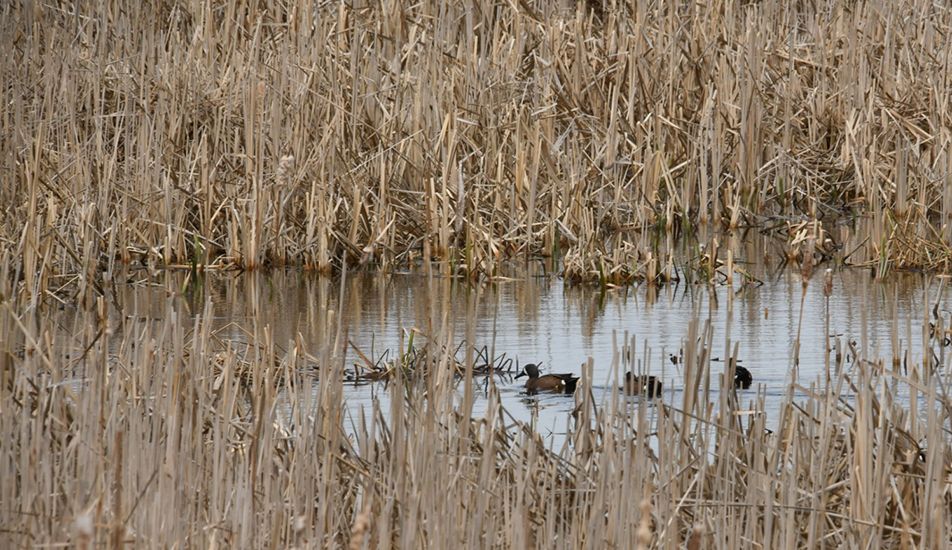Ontario Nature Blog
Receive email alerts about breaking conservation
and environmental news.
© Lora Denis
pectoral sandpiper © Peter Massas
One of the charms of birding is the amount of time one ends up spending at sewage lagoons. Peculiar, verging on toxic smells aside, sewage lagoons offer some of the best birding opportunities and luckily for us, southern Ontario boasts some fine sewage treatment plants! Part of the reason birds gravitate toward such manmade wetlands is precisely what repels us humans with developed olfactory systems: the actual sewage. Thanks to the raw sewage, these lagoons abound in micro-organisms, which birds – and shorebirds in particular – find deliciously enticing.
This weekend, we spent a productive morning at the Townsend Sewage Lagoon, in Haldimand County. The relatively low water levels brought out a fascinating array of shorebirds, who appropriated the sewage lagoon as a migratory stopover on their way to South America.
This congregation of shorebirds reminded me how challenging it is to identify and distinguish between different species. The experience of observing peeps reinforced the fact that there is no better exercise in patience than birding! How slowly one begins to see (let alone remember) the subtle differences between a pectoral, solitary, spotted and stilt sandpiper.
Identifying shorebirds is a careful study in nuance. Binoculars (even good ones, such as my Zeiss) fall short here – one really can’t glean much without a decent scope. I found myself frustrated with the descriptive words I kept hearing, such as “slightly chunkier”, “darker stripes”, “brownish vs. greyish”, “greenish legs”, since even under optimal lighting, I can barely distinguish greenish legs from yellowish legs from slightly darker legs and every bird seems similarly stripy and of almost identical girth.
But of course, the closer you look, the more you see, the more you recognize. Observing large numbers of shorebirds also has the added advantage of providing opportunity for size-comparison. It’s near-impossible to understand a pectoral sandpiper’s “chunkiness” on its own terms, since size is a relative concept; but when the pectoral appears in tandem with a least sandpiper – the smallest shorebird in the world – it seems positively gargantuan!

That day, we also saw greater and lesser yellowlegs, killdeer, semipalmated, black-bellied, and American golden plovers, and ducks of various persuasions in eclipse plumage (infinitely more challenging to ID than even shorebirds and I decided to save that for another day). I was proud of myself for finally making sense of the resemblance between the killdeer with two neck stipes and the semipalmated plover with one.
But it wasn’t until I focused my scope on the wandering least sandpiper that I finally saw the beauty and magic of shore birds. I watched the peep waddle about, hunched over, head pointed toward the water while feeding on the plethora of tasty invertebrates. I marveled at the fact that this tiny bird measures no more than 15 cm, weighs only 30 grams yet travels all the way from northern Canada and Alaska to South America every year.
The time to see migrating shorebirds and visit your local sewage lagoon is now! I highly recommend it for an intellectually challenging and riveting exercise in bird identification. And one gets used to the smell fairly quickly.

Proposed 413 Route, Old School Road with farm and escarpment view © Noah Cole